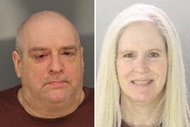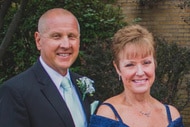The History And Mysteries That Inspired Netflix's 'The Haunting Of Hill House'
“I really wanted to deconstruct the book, extract characters, moments, themes and even individual lines of prose and reassemble them into something new,” director Mike Flanagan said of the new 10-part miniseries.

Netflix’s new smash-hit miniseries “The Haunting of Hill House” is the latest project to revitalize aspects of Shirley Jackson’s classic 1959 horror novel of the same name, and it succeeds in creating something both fresh and familiar. The Mike Flanagan-helmed drama about the Cain family deviates significantly from its source material; but like Steven and Olivia Crain’s talent for fixing and flipping old houses, Flanagan’s version retains parts of the original foundation but doesn’t shy away from using different source material in order to build a new addition to “Hill House.”
“I heard someone describe this as an ‘echo’ of the novel, as opposed to an adaptation, and that feels right to me,” Flanagan told the Huffington Post earlier this month. “I really wanted to deconstruct the book, extract characters, moments, themes and even individual lines of prose and reassemble them into something new.”
Jackson’s novel is said to have taken inspiration from, among other things, a group of 19th century psychic researchers who rented an allegedly haunted house in order to observe and study it.
“They thought that they were being terribly scientific and proving all kinds of things,” Jackson wrote in her essay “Experience and Fiction,” “and yet the story that kept coming through their dry reports was not at all the story of a haunted house, it was the story of several earnest, I believe misguided, certainly determined people, with their differing motivations and backgrounds.”
Before she started writing the book, Jackson went through magazines and other publications in search of houses that seemed haunted. In the search, she came across a photo of a house in California that she said had “an air of disease and decay,” according to the biography “Shirley Jackson: A Rather Haunted Life” by Ruth Franklin.
It’s more than likely that the creepy California house Jackson was inspired by was the Winchester Mystery House, itself a spectacularly insane structure. It was built on a fortune made from rifles that have undoubtedly killed animals — and humans.
Jackson’s characters mention the San Jose residence by name in the book, saying that Hill House may have been slated at some point to be turned into a “showplace” like the Winchester given the similarities in architecture and eeriness.
The space between reality and dreams permeates both the novel and the current miniseries. Jackson mentioned in her essay that a horrifying sleepwalking experience she had during of the writing process, in which she woke up to find a note in her own handwriting reading “DEAD DEAD” on her desk. She said the freaky note motivated her to “write the book awake, which I got to work and did.” Franklin also writes about her subject’s profound interest in the occult informing her work.
One true story, however, sticks out as seemingly the most likely true “source” of Jackson’s novel. The Moberly-Jourdain incident occurred in 1901, and the two women involved — Charlotte Anne Moberly and Eleanor Jourdain, both English academics — claimed to have stumbled upon some sort of French ghost gathering on the outskirts of Versailles during a vacation. Searching for the Petit Trianon, the pair claimed to have encountered several 18th century specters, including a sinister-looking man suffering from smallpox and a woman sketching in the grass (who Moberly later claimed was Marie Antoinette) as they attempted to correct their course and find their destination. After not speaking about the strange feelings and scenes they say they witnessed, Moberly and Jourdain eventually put pen to paper and recorded the incident and titled it “An Adventure.”
It’s easy to see how these stories and experiences influenced Jackson’s book, which focuses on a paranormal investigator who enlists two women with previous spectral experiences to assist in his investigation of Hill House.
Flanagan, however, seems to have carefully “re-assembled” these anecdotes to fit his (Stephen King-approved) version of the story.
For example, the series consistently examines the conflict between science and the paranormal. Whether it’s Steven’s refusal to believe in his siblings’ stories despite profiting off them, Nell's therapist casting doubt on her ghastly visions and the inherent evil of Hill House or Theo, a character whose life has been shaped by real-world science and otherworldly sensations, bearing witness to her young patient’s trauma in the form of a terrifying smiling specter, the show demonstrates in different ways the trouble that scientific types often find themselves in when they experience something that can’t be explained away by formulas and theories.
On the flip side, the series also explores the adversity those who are, in Olivia Crain's words, more "sensitive" deal with when trying to explain the workings of the ethereal world to the self-proclaimed realists that are around them. Like Moberly and Jourdain, virtually every member of the Crain family has firsthand experience with paranormal forces, but only one decides to write a book about their experiences; some choose to dutifully accept their fate and the cards dealt to them, while others live in constant denial and let their demons get the best of them.
The show does a good job reflecting its source material while clearly bearing the touches of the people who brought it to life this time around.
"Each of us had dug so deep into our own families and stories to try and form the show…" Flanagan told The Hollywood Reporter.
As for the actual house, it also comes across as a structure steeped in both personal and historical truths. Like Jackson's novel, the Netflix series explores the idea of a house that doesn't just host vengeful spirits but is itself an evil being.
"By the end, we put in more ghosts than the story of the house would even support," Flanagan told THR. "It collected these fractured psyches of the people who had been inside."
The eponymous structure in the series is located in Massachusetts (it's never revealed in the book), which is likely a homage to Flanagan being born in Salem, historically the state's witchiest town. Whether occupied or abandoned, it undeniably maintains an “air of disease and decay” like the California home that is said to have served as Jackson's inspiration.
It's speculated, however, that a different building might actually be the real-life inspiration for Hill House: The Jennings Music Building, located on the campus of Bennington College in Bennington, Vermont, according to Cosmopolitan. The rumor stems from the building’s inherent eeriness as well as Jackson's past proximity to it; her husband, Stanley Edgar Hyman, was at a professor at the college at one point.
While no single story can be singled out as the inspiration for either Jackson's novel or Flanagan's adaptation, both works are the result of historical happenings and personal anecdotes refracted through both authors.
[Photo Credit: Getty]

























